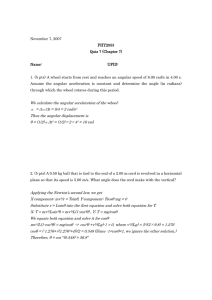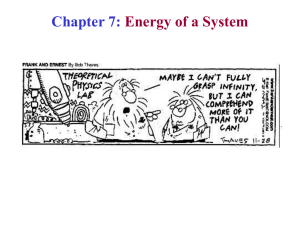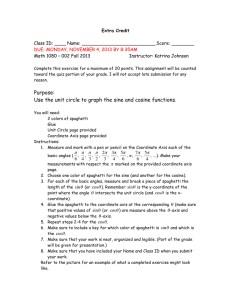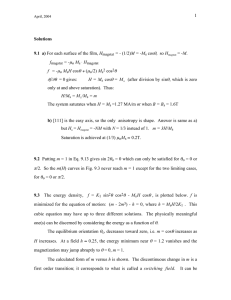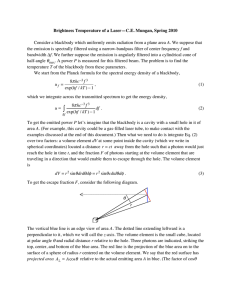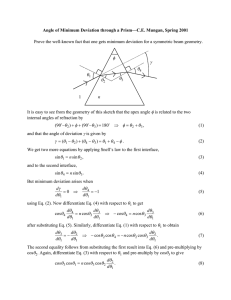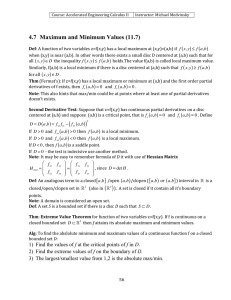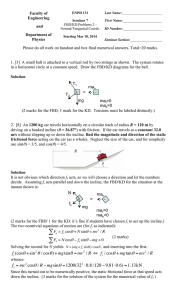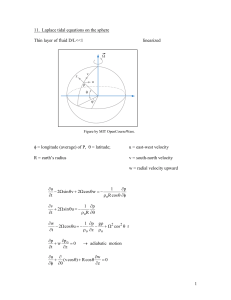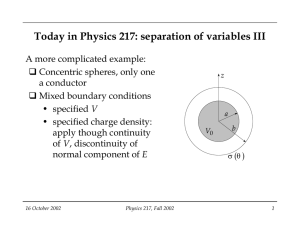Q q Find the surfaces of zero electrostatic potential, assuming the usual... yz
advertisement
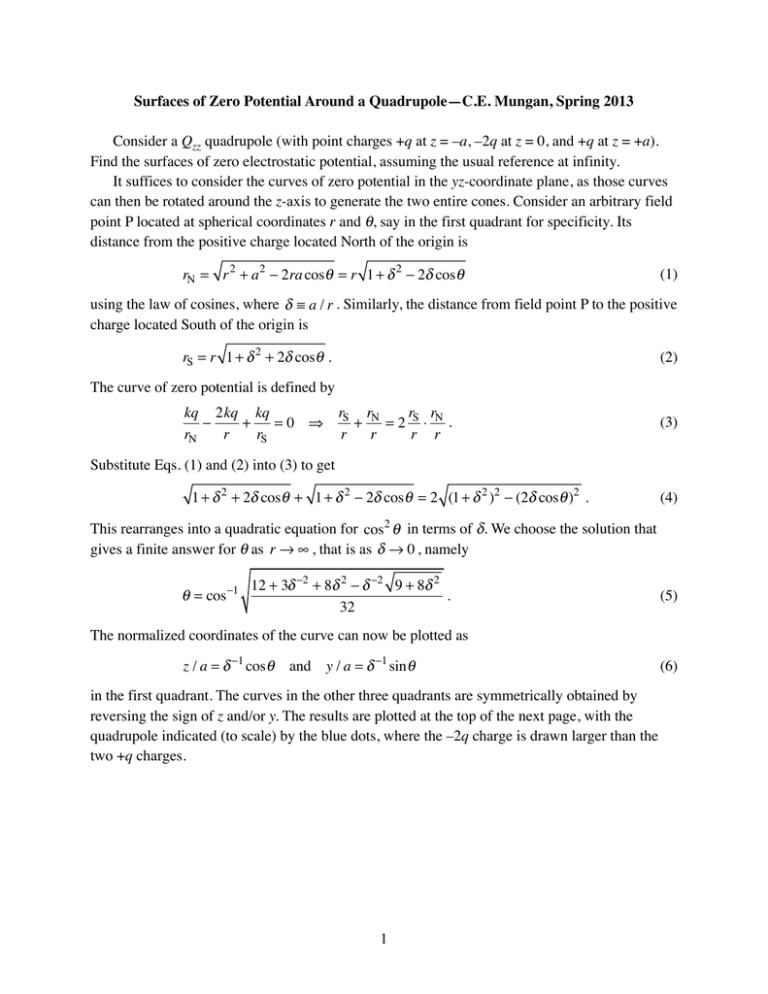
Surfaces of Zero Potential Around a Quadrupole—C.E. Mungan, Spring 2013 Consider a Qzz quadrupole (with point charges +q at z = –a, –2q at z = 0, and +q at z = +a). Find the surfaces of zero electrostatic potential, assuming the usual reference at infinity. It suffices to consider the curves of zero potential in the yz-coordinate plane, as those curves can then be rotated around the z-axis to generate the two entire cones. Consider an arbitrary field point P located at spherical coordinates r and θ, say in the first quadrant for specificity. Its distance from the positive charge located North of the origin is rN = r 2 + a 2 − 2ra cosθ = r 1 + δ 2 − 2δ cosθ (1) using the law of cosines, where δ ≡ a / r . Similarly, the distance from field point P to the positive charge located South of the origin is rS = r 1 + δ 2 + 2δ cosθ . (2) The curve of zero potential is defined by kq 2kq kq − + =0 ⇒ rN r rS rS rN r r + =2 S⋅ N. r r r r (3) Substitute Eqs. (1) and (2) into (3) to get 1 + δ 2 + 2δ cosθ + 1 + δ 2 − 2δ cosθ = 2 (1 + δ 2 )2 − (2δ cosθ )2 . (4) This rearranges into a quadratic equation for cos2 θ in terms of δ. We choose the solution that gives a finite answer for θ as r → ∞ , that is as δ → 0 , namely θ = cos−1 12 + 3δ −2 + 8δ 2 − δ −2 9 + 8δ 2 . 32 (5) The normalized coordinates of the curve can now be plotted as z / a = δ −1 cosθ and y / a = δ −1 sin θ in the first quadrant. The curves in the other three quadrants are symmetrically obtained by reversing the sign of z and/or y. The results are plotted at the top of the next page, with the quadrupole indicated (to scale) by the blue dots, where the –2q charge is drawn larger than the two +q charges. 1 (6) 10 z/a y/a -10 10 -10 In the limit of large r (i.e., small δ), Eq. (5) reduces to an angle of θ ∞ = cos−1 1 ≈ 54.7° 3 (7) relative to the z axis. The cones are within 4° of this angle by the time r is larger than 2a. At the other limit, a little thought will convince one that there must be a point of zero potential somewhere between each positive charge and the central negative charge. (For example, if the lower positive charge were absent, the point of zero potential would be located two-thirds of the distance from the origin to the upper positive charge. The presence of the lower positive charge 2 shifts the point a bit closer to the origin.) Specifically, the z intercept corresponds to θ0 = 0°, in which case Eq. (5) implies that z0 = a 5 −1 ≈ 0.618 . 2 (8) We see clearly from the preceding graph that a quadrupole has 2 distinct surfaces on which the potential is zero, conforming to the general rule that a 2l-pole (where l = 0 is a monopole, l = 1 is a dipole, and so on) has l surfaces on which the potential is zero. 3
